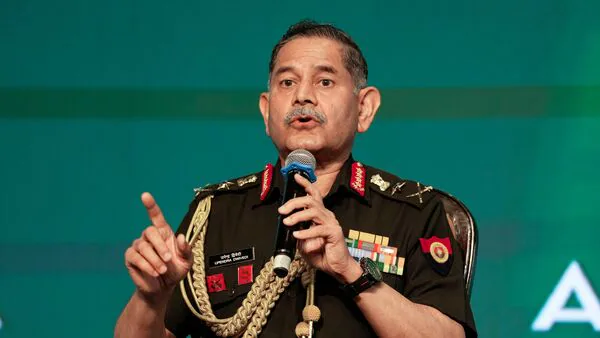Army Chief Upendra Dwivedi Tells What India Needs To Sustain Longer Wars: 'Ops Sindoor Finished As 4-Day Test Match'
While speaking at AIMA's 52nd National Management Convention on Tuesday, Army chief Gen Upendra Dwivedi said the armed forces "were not sure for how many days it would remain and most of us were saying, why is it finished in a four-day test match?"
He went on to explain what is needed to sustain the war for a longer period. He said there are three aspects: force visualisation, force protection, and force application.
"The force visualisation, which was done in the Russia-Ukraine war, there was a miscalculation...We need to understand what technology is available on the other side to sustain the war for a longer period," Army chief Gen Upendra Dwivedi said.
"This mean, we should be able to make sure that we have enough to last for a longer war," he said.
He further emphasised the relevance of the "David and Goliath system" in modern warfare, which means "low-cost, high-technology."
"If you have low-cost, high-technology, you will be able to beat back a superior adversary also," he said.
He explained that protection is a "new thing because you should be able to take onslaught of the enemy barrage and thereafter, you should be able to come out and carry out the actions which are required to be done."
"So these three, what I look at is the main thing where we need to work out," the Army chief said.
"Now, all this is only feasible because you'll find all these three can only be connected by communication and cyber. These two things are something which play a constant role in the complete thing," Gen Upendra Dwivedi said.
'Goalposts will keep changing'He noted the rapid pace of technological advancement in warfare. "...The goalposts will keep changing. If I wanted something to fire at 100 kilometres, tomorrow it has to go to 300 kilometres."
"Because it is not only me, it is the adversary is also enhancing its technology. As his technology is enhancing, I need to make sure that my technological level is ready to beat its technological impact. Here, Atmanirbharta becomes important..." he said.
Operation SindoorIndia launched Operation Sindoor early on May 7, under which the armed forces decimated multiple terror infrastructure in Pakistan and Pakistan-occupied-Kashmir, in retaliation for the deadly Pahalgam attack on April 22.
Pakistani forces retaliated with offensives and Indian forces also launched counter-offensives under Operation Sindoor, as a result the conflict went on for nearly four days.
After the two sides reached an understanding, the military action was stopped in the evening of May 10.
Legal Disclaimer:
MENAFN provides the
information “as is” without warranty of any kind. We do not accept
any responsibility or liability for the accuracy, content, images,
videos, licenses, completeness, legality, or reliability of the information
contained in this article. If you have any complaints or copyright
issues related to this article, kindly contact the provider above.
Market Research

- Gas Engine Market Analysis: Strong Growth Projected At 3.9% CAGR Through 2033
- Daytrading Publishes New Study On The Dangers Of AI Tools Used By Traders
- Excellion Finance Launches MAX Yield: A Multi-Chain, Actively Managed Defi Strategy
- United States Lubricants Market Growth Opportunities & Share Dynamics 20252033
- ROVR Releases Open Dataset To Power The Future Of Spatial AI, Robotics, And Autonomous Systems
- Blackrock Becomes The Second-Largest Shareholder Of Freedom Holding Corp.



















Comments
No comment